When it comes to maintaining the health of the central heating system, regular testing to check the levels of inhibitor is key. Here, we explain why and look at some of the handy products that you can use to ease and speed up the testing process.
A central heating system is full of metal components and when water comes into contact with them, it can lead to corrosion. If left untreated, limescale, sludge and other corrosion debris will build-up over time and can circulate within the system to lodge in pipework and vulnerable system components, causing blockages. This forces the system to work harder and results in a sluggish, inefficient performance – as well as higher fuel bills for the customer and increased carbon emissions. It can even cause system breakdown.
To prevent this from happening, simply dose the system with any of the following high-quality corrosion inhibitors:
- Fernox Protector F1
- Fernox Protector F1 Express
- Protector+ Filter Fluid
- Protector+ Filter Fluid Express
Testing for inhibitor – why it’s important
Inhibitor plays a key role in maintaining system efficiency, and if underdosed the system can still be at risk of scale and debris build-up. It is therefore vital that the system is regularly checked to make sure that the correct concentration of inhibitor is present, and the central heating system remains protected long-term. On-site testing will advise the installer if levels are too low and allow them to quickly re-dose as required.
As well as confirming the presence of inhibitor, laboratory testing can also help to identify any existing issues and equip the installer with full, diagnostic information needed to rectify them. This will ultimately prevent major damage from occurring – and extend system life by keeping it working at optimum efficiency.
How to comply with BS 7593:2019
BS 7593:2019 recommends that inhibitor levels are checked on-site annually, and a laboratory test conducted every five years or redosing of the system.
It is also worth noting that the Benchmark Commissioning Checklist supports this by asking installers to confirm that the system inhibitor concentration has been checked and appropriate action taken in accordance with BS 7593:2019.
How to conduct an on-site inhibitor test
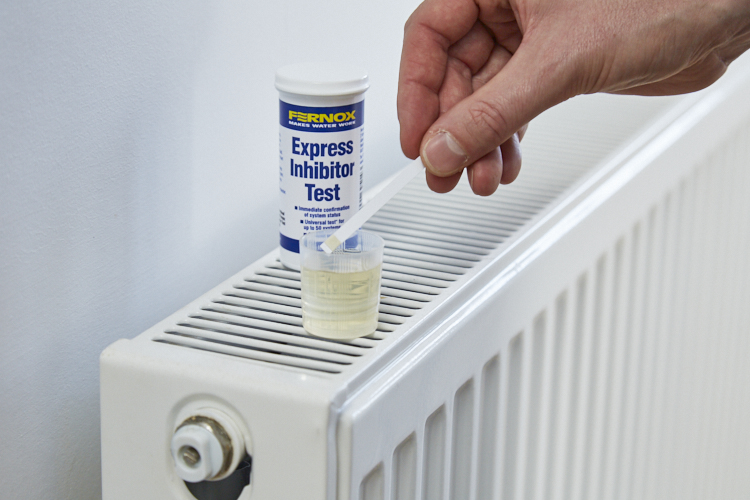
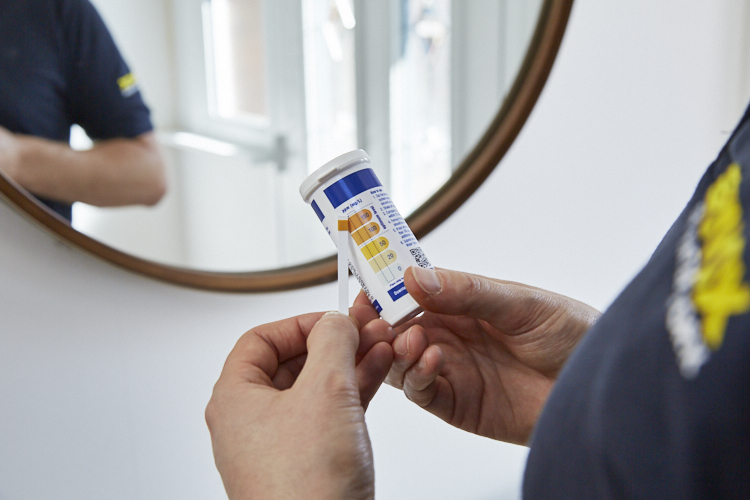
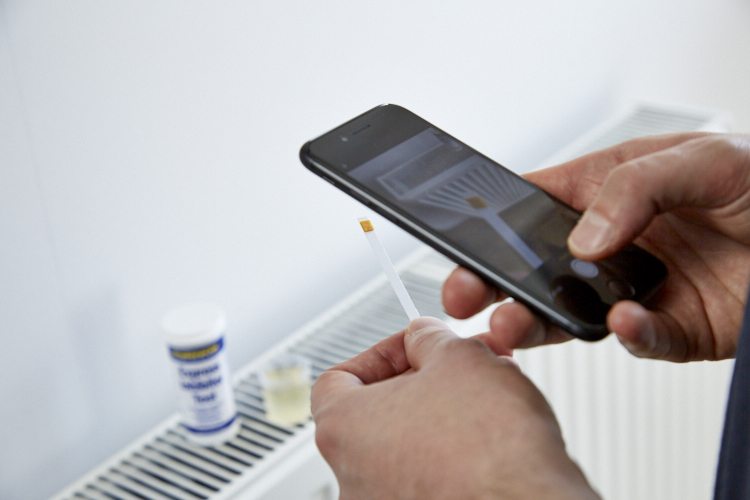
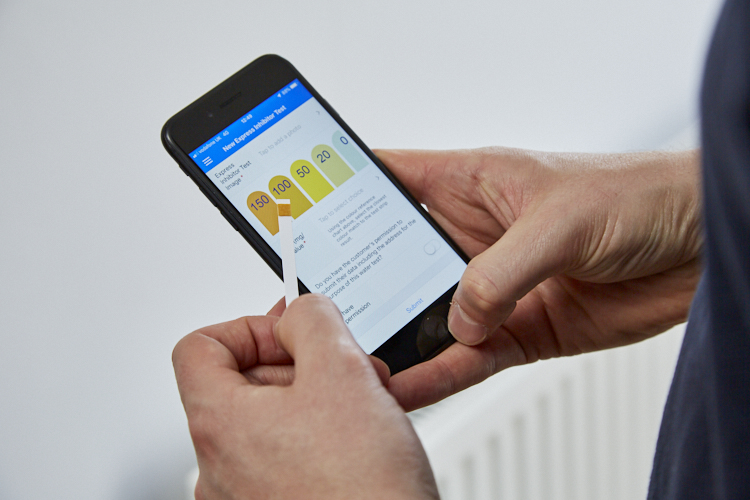
The Fernox Express Inhibitor Test makes on-site testing incredibly quick and easy. Simply dip the test strip provided into the system water and within seconds it will change colour. Next, compare the test strip to the colour chart on the bottle – a fully protected system will have inhibitor levels of 100ppm or above and will pass the test. If the dip test shows less than 100ppm, it can be remedied instantly with a high-quality inhibitor such as Fernox Protector F1 or Protector+ Filter Fluid (if a filter is fitted) and the test re-taken without having to leave the job site and return.
Installers can also keep track of results using the free to use Fernox Water Test App. Using the in-app camera, take a picture of the test strip and select its colour to generate the pass or fail result. If the test passes, users will receive a digital certificate that acts as evidence that the test has been completed and the system is fully protected. If a test fails, installers can also demonstrate to the customer that appropriate action has been taken by redosing the system and re-testing the water to receive a positive result. The App enables installers to monitor and record the number of properties tested, keeping the data in one place.
How to complete laboratory testing
To perform a laboratory test, installers should take a sample of the central heating system water and send it off for analysis. This can be done using the Fernox Water Quality Test kit, that includes everything needed.
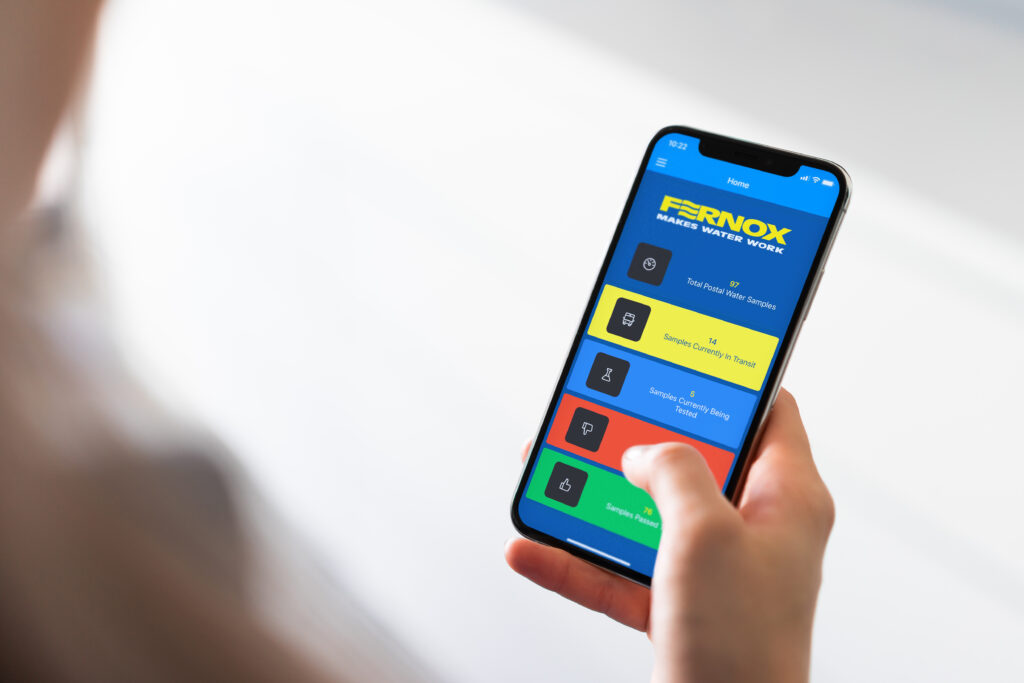

Once a system sample is collected, simply use the Fernox Water Test App to submit all sample details electronically by scanning the QR barcode on the sample bottle. The physical sample can then be sent via free next day delivery to the Fernox laboratory where the technicians will conduct an analysis of key system water parameters. Pass or fail results will be available via the Fernox Water Test App within 24-48 hours of receipt of the sample and a full diagnostic report, including how to remedy any issues, will be available online.
To find out more about our range of testing products speak to your local sales representative or contact us today.




















